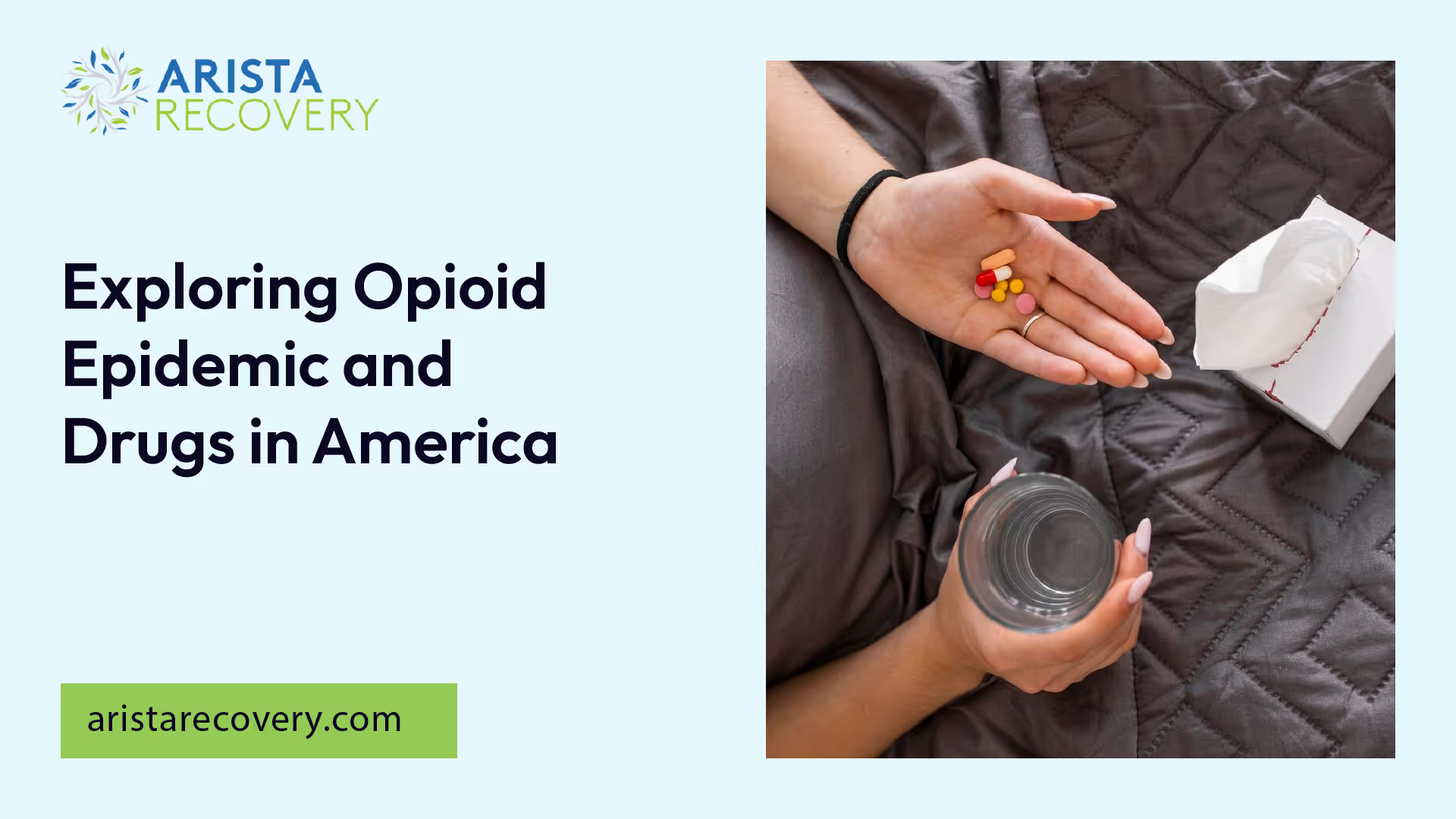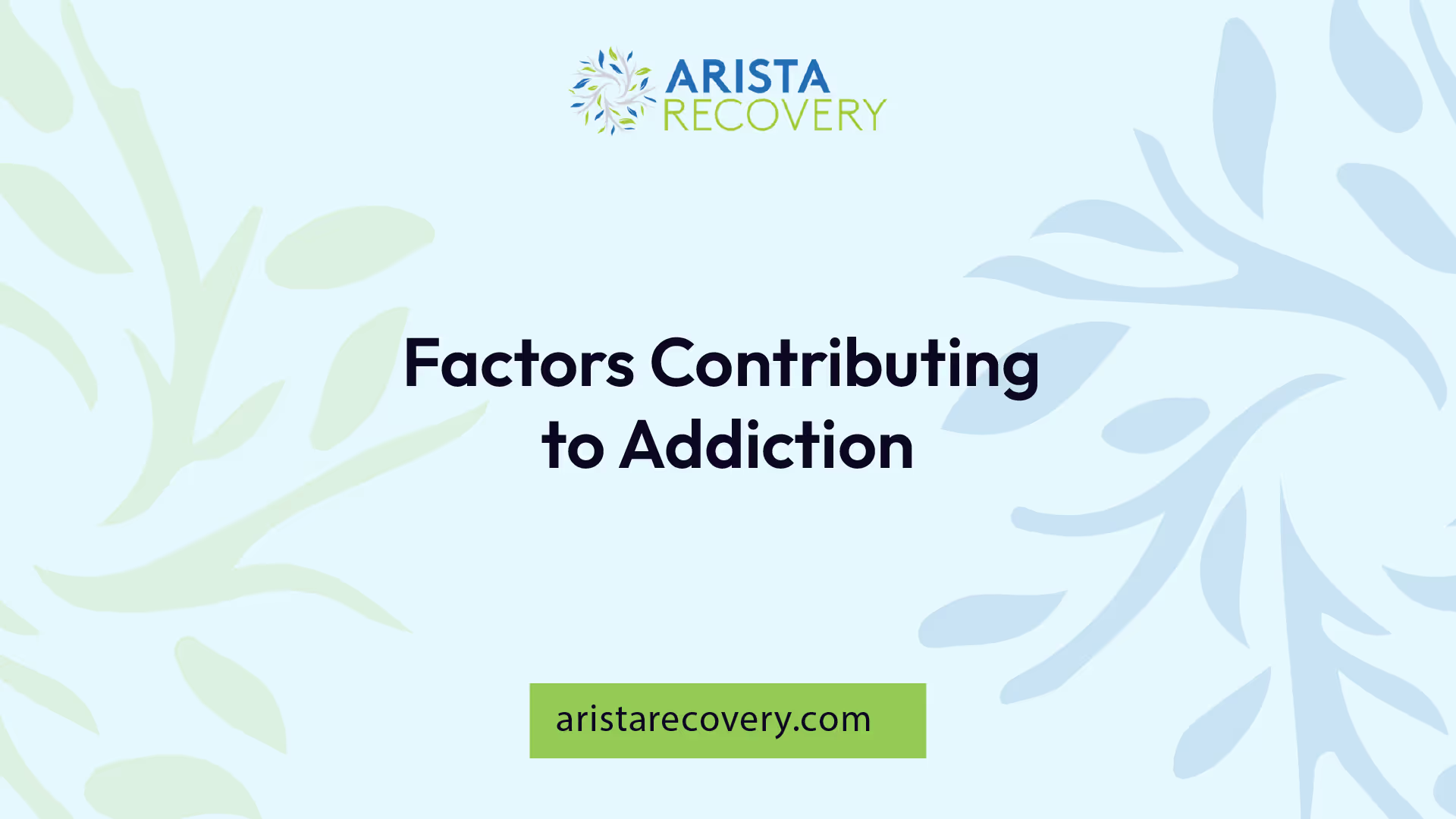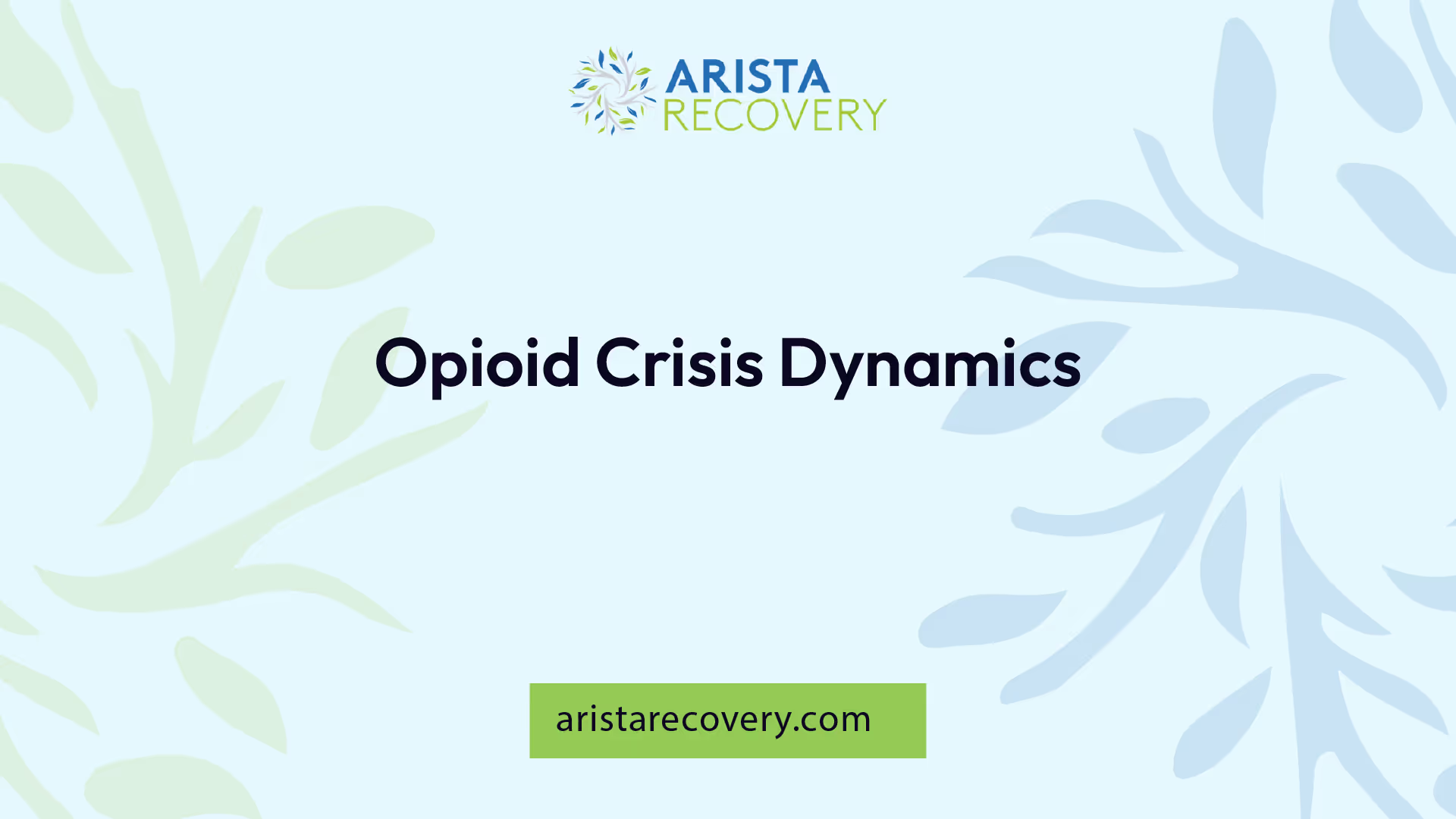Exploring Opioid Epidemic and Drugs in America

Understanding Drug Addiction
The opioid epidemic and drugs in America has transformed the landscape of addiction, creating a pressing public health crisis. Understanding the impact of this epidemic is essential for those seeking recovery.

Impact of the Opioid Epidemic
The opioid crisis has led to an alarming rise in drug overdose deaths. In 2020, drug overdose deaths reached a staggering 93,331, marking the highest number ever recorded in the United States. This surge has not only resulted in significant loss of life, but it has also had a profound effect on broader societal issues, such as the economy and labor force participation. Estimates suggest that the epidemic accounts for 43% of the decline in men’s labor force participation rate and 25% for women between 1999 and 2015.
The opioid crisis has caused notable workforce shortages, reduced employee productivity, and increased personnel costs for employers. As the addiction impacts individuals’ abilities to work and contribute to their communities, recovery becomes a crucial goal, not just for the individuals but for society as a whole.
YearDrug Overdose Deaths201867,367201970,630202093,331
Demographic Vulnerabilities
Certain demographics are particularly vulnerable to the effects of the opioid epidemic. The overdose death rates vary significantly among different racial and ethnic groups. In 2019, non-Hispanic American Indians or Alaska Natives exhibited a higher drug overdose death rate of 30 per 100,000 compared to other racial or ethnic groups.
Understanding these demographic trends is important, as they highlight the need for targeted prevention and treatment strategies tailored to specific communities. By focusing on these vulnerable groups, public health initiatives can better address the unique challenges they face related to addiction and recovery.
The statistics and information surrounding the opioid epidemic and drug addiction can provide crucial insights for those seeking help. Individuals grappling with addiction can refer to resources such as the deadliest effects of drugs, most abused prescription drugs, and how do drugs affect brain to understand their conditions and potential recovery paths. Furthermore, awareness of emerging threats like five dangerous designer drugs is essential for making informed decisions about health and well-being.

Factors Contributing to Addiction
Understanding the various elements that contribute to drug addiction, particularly in the context of the opioid epidemic, is essential for addressing this pressing issue.
Socioeconomic Influence
Socioeconomic factors significantly affect addiction rates and recovery outcomes. Individuals without health insurance, those who have been incarcerated, and people living in poverty are at a heightened risk of experiencing a fatal opioid overdose [1]. Additionally, industries such as construction and extraction, which have some of the highest rates of opioid overdose fatalities, often lack access to paid sick leave and face high rates of occupational injuries. These conditions lead to significant musculoskeletal disorders, which increase the likelihood of long-term opioid use [2].
The table below summarizes the risk factors associated with opioid use among specific socioeconomic groups:
Socioeconomic FactorIncreased Risk of Opioid AddictionNo Health InsuranceHighIncarceration HistoryHighLiving in PovertyHighLow Access to Paid Sick LeaveModerateHigh Occupational Injury RatesHigh
Occupational injuries are often triggers for opioid prescriptions. Studies indicate that injured workers are more likely to receive opioid prescriptions, with one-third of previously opioid-free workers receiving a prescription within six months following a workplace injury [2].
Health Care System Challenges
The health care system presents several challenges that can exacerbate the opioid crisis. Over the past 25 years, there has been a dramatic increase in Americans suffering from Opioid Use Disorder (OUD). This rise correlates with the significant increase in opioid prescribing, especially among patients suffering from chronic pain who are prescribed opioid analgesics.
Rural communities face unique obstacles in treating OUD. They often have limited access to healthcare facilities, which can lead to inadequate services and increased rates of opioid-related deaths and abuse. As of 2020, rural hospitals faced financial strains, with $7 billion in Medicaid and Medicare underpayments and $4.6 billion in uncompensated care, which contributes to potential hospital closures and negative economic impacts on local communities [4].
Addressing these socioeconomic influences and health care system challenges is critical for effective prevention and treatment strategies related to the opioid epidemic and drugs in America.

Opioid Crisis Dynamics
Prescription Trends
The opioid crisis in America has been profoundly influenced by rising prescription rates over the past several decades. Beginning in the 1980s, the treatment approach for acute pain increasingly favored the use of prescription opioids such as propoxyphene. As a result, the number of Americans suffering from Opioid Use Disorder (OUD) has increased dramatically, paralleling the surge in opioid prescriptions. In fact, it is now common for patients with chronic pain to receive opioid analgesics, which has perpetuated this health crisis [3].
According to the National Center for Biotechnology Information (NCBI), the United States consumes more than 80% of the world's opioids, despite representing only 4.4% of the global population. Approximately 1 in 3 adults in America has used or is currently using prescription opioids, resulting in increased accessibility for vulnerable populations [4].
YearPrescription Rates (number of prescriptions)199976 million2010210 million2017191 million
Transition to Illicit Drugs
As the crisis progressed, many individuals who became dependent on prescription opioids transitioned to illicit drugs, particularly heroin. This shift usually occurs due to a combination of factors, including increased restrictions on prescribing opioids, higher costs, and difficulties obtaining prescriptions. By approximately 2010, a noticeable rise in heroin overdose deaths marked this transition. The availability of heroin and fentanyl analogs has further exacerbated the situation, leading to a surge in intoxications and fatalities starting in late 2013.
The NCBI highlights that the roots of this crisis are intertwined with several social and economic factors, compelling individuals toward opioids as a coping mechanism for physical and psychological trauma, alongside feelings of isolation and hopelessness. The implications of this transition are severe, as the health risks associated with illicit drugs pose significantly higher dangers compared to prescribed medications. Individuals seeking recovery can find valuable information and support through resources addressing deadliest effects of drugs and most abused prescription drugs.
Health Risks and Mortality
The opioid epidemic presents significant health risks and crises, leading to alarming overdose rates and varied mortality across different demographic groups. Understanding these factors plays a crucial role in addressing drug addiction in America.
Overdose Rates
The rise in drug overdose deaths reflects the severity of the opioid crisis. In 2020, the United States recorded an unprecedented number of overdose deaths, reaching 93,331, the highest ever documented. The increase in overdose rates is particularly notable among specific drug categories.
Drug TypeChange (1999 - 2023)Synthetic opioids (excluding methadone)103-foldPsychostimulants with abuse potential64-foldCocaine7.6-foldPrescription opioids4.1-foldHeroin2.5-fold
As the table illustrates, synthetic opioids have seen the steepest rise in overdose deaths, contributing significantly to the overall crisis.
Mortality in Different Groups
Mortality rates due to the opioid epidemic vary among different demographic groups. Since tracking began in 1999, overdose-related deaths from opioids have tripled in the United States. The COVID-19 pandemic may have exacerbated this trend, with a reported 41% increase in opioid-related fatalities in 2020.
Men, particularly those between the ages of 25 and 54, are disproportionately affected, comprising nearly 70% of opioid-related deaths [4].
Demographic GroupPercentage of Overdose DeathsMales (ages 25-54)70%Females30%
The sustained high mortality rates associated with the opioid crisis demonstrate a need for targeted interventions and effective strategies for treatment. The opioid epidemic has already claimed more than 300,000 lives since 2000 and could claim another half million over the next decade. Understanding these trends is vital for policymakers, health providers, and communities aiming to combat this pressing public health challenge. For further information on the consequences of drug use, consider exploring the deadliest effects of drugs and most abused prescription drugs.
Legal and Government Actions
The opioid epidemic is a significant public health crisis that has prompted both legal and legislative actions at various levels of government. A comprehensive approach has been taken to address the complexities surrounding opioid addiction and its consequences.
Litigation Against Manufacturers
Lawsuits against opioid manufacturers have been initiated since the early 2000s, gaining momentum in recent years. The initial legal actions were personal injury claims against companies such as Purdue Pharma, which produces OxyContin. These claims centered on issues of defectively designed opioids and the failure to adequately warn about potential addiction risks [6].
Governments—federal, state, county, and city—have pursued litigation against opioid corporations, citing allegations of unreasonable interference with public health, deceptive business practices, and unjust enrichment. This legal strategy mirrors those used in lawsuits against tobacco and firearm companies, focusing on corporate accountability rather than placing blame solely on consumers or prescribers [6].
Although opioid litigation has seen settlements amounting to hundreds of millions of dollars, they have not significantly impacted the $13-billion-a-year opioid industry. These settlements often include agreements for companies to alter their marketing and distribution practices. The resources generated from these legal actions have the potential to fund opioid addiction treatment and law enforcement efforts [6].
YearSettlement Amount (in Millions)Purpose of Funds2020270Treatment and prevention programs2021400Overdose-reversal drug distribution2022500Public health initiatives
Government Response and Legislation
In addition to litigation, government responses have included various pieces of legislation aimed at combating the opioid crisis. These laws endeavor to increase transparency in the pharmaceutical industry, implement prescription monitoring programs, and enhance addiction treatment services.
Legislative efforts focus on allocating resources for opioid addiction treatment and prevention while ensuring that communities receive necessary support services. Future payouts from opioid litigation may be earmarked for initiatives such as distributing naloxone, a crucial overdose-reversal drug.
The overarching goal of these legal and governmental actions is not only to address the immediate effects of the opioid epidemic but also to foster a shift in the industry's practices, raise public awareness, and promote stricter regulation to help curb the ongoing crisis. By addressing both the manufacturers and the systemic issues within the health care system, there is hope for a more effective response to the opioid epidemic and drugs in America. For more insights into the impact of drug addiction, explore our section on the deadliest effects of drugs and most abused prescription drugs.
Treatment and Prevention Strategies
Addressing the opioid epidemic in America requires comprehensive treatment and prevention strategies. Successful methods include Prescription Monitoring Programs (PDMPs) and comprehensive health care integration.
Prescription Monitoring Programs
Prescription Monitoring Programs (PDMPs) are designed to track prescriptions for controlled substances, thus helping to manage patients and reduce prescription opioid misuse. Implementing PDMPs has led to a decrease in opioid overprescription, along with increased confidence among healthcare providers when prescribing medications. However, the effectiveness of PDMPs in improving health services, particularly in rural communities, is still a topic of debate. Evidence for their impact on reducing opioid overdoses and deaths remains inconclusive.
MetricEffect of PDMPsReduction in OverprescriptionYesIncreased Provider ConfidenceYesImpact on Overdose RatesInconclusiveImprovement in Rural Health ServicesInconclusive
Challenges still persist, such as a lack of legal mandates for PDMP usage and insufficient education for healthcare providers regarding best practices. These issues limit the full potential of PDMPs in combating the opioid crisis.
Comprehensive Health Care Integration
Another vital strategy in tackling drug addiction is the integration of addiction care into mainstream health care systems. This approach recommends providing long-term funding and ensuring that both public and private insurance plans cover a comprehensive range of addiction services. This integration is essential for offering holistic care to individuals suffering from addiction, thereby improving their chances of recovery [7].
Proper integration allows for coordinated care among various health services, enabling a more effective response to the complexities of addiction. Research indicates that sustained efforts to reshape prescribing practices are critical for preventing and managing opioid use disorder (OUD). A formal quantitative model is necessary to understand the behaviors within the opioid ecosystem and to predict the outcomes of policy changes and interventions concerning opioid prescriptions and misuse [8].
By adopting these treatment and prevention methods, stakeholders can work collaboratively to address the challenges associated with addiction in America. For more insight into the severe consequences of addiction, please see our article on deadliest effects of drugs. Additionally, understanding the types of substances involved is crucial; visit our sections on most abused prescription drugs for more information.
References
[1]: https://www.hhs.gov/overdose-prevention/[2]: https://www.brookings.edu/articles/the-economic-impact-of-the-opioid-epidemic/[3]: https://journalofethics.ama-assn.org/article/how-fda-failures-contributed-opioid-crisis/2020-08[4]: https://www.ncbi.nlm.nih.gov/pmc/articles/PMC10410480/[5]: https://www.ncbi.nlm.nih.gov/pmc/articles/PMC5846593/[6]: https://www.ncbi.nlm.nih.gov/pmc/articles/PMC7479783/[7]: https://www.hsph.harvard.edu/news/features/what-led-to-the-opioid-crisis-and-how-to-fix-it/[8]: https://www.ncbi.nlm.nih.gov/books/NBK458653/
You’re not alone in this.
When mental health challenges and addiction intersect, it can feel isolating. At Arista, we offer compassionate, evidence-based, and trauma-informed care to help you heal, grow, and move forward.
You’re not alone in this.
When mental health challenges and addiction intersect, it can feel isolating. At Arista, we offer compassionate, evidence-based, and trauma-informed care to help you heal, grow, and move forward.
Support that moves with you.
You’ve taken a brave first step. At Arista Recovery, we’re here to help you continue with best-in-class care designed for long-term healing and support.
.webp)






